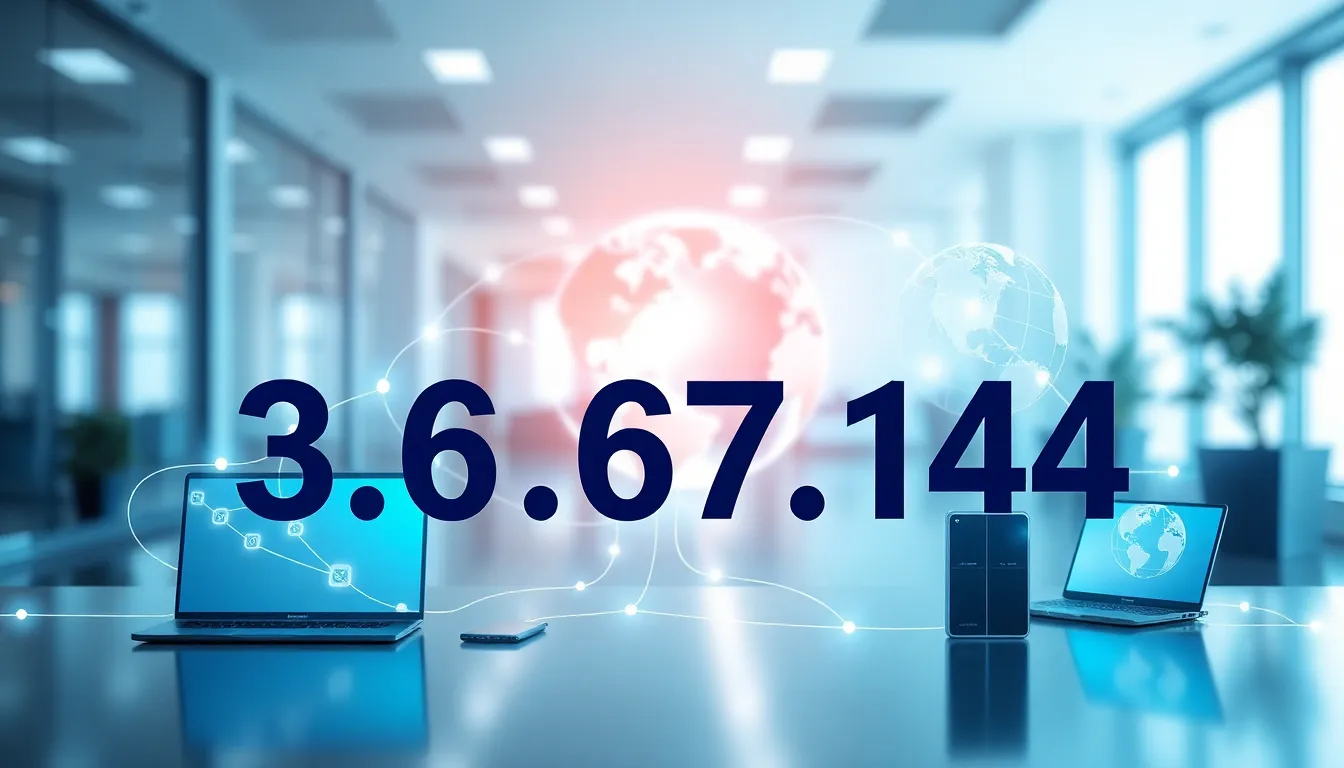Physical Address
304 North Cardinal St.
Dorchester Center, MA 02124

Ever wondered what the numbers behind the Internet really mean? Welcome to the world of IP addresses, where 3.6.67.144 might just be your new best friend or worst nightmare, depending on your online habits. While the term ‘IP address’ may sound like tech jargon fed to unsuspecting children to make them fall asleep, it actually holds the key to understanding how we connect to the digital universe. Get ready to jump into the nitty-gritty of IP addresses, their implications, and the mysterious world of 3.6.67.144.

An IP address, or Internet Protocol address, serves as the unique identifier for devices connected to a network. Think of it as your digital address, a way for other devices to locate and communicate with you. Just as every house requires an address for mail to arrive, every device needs an IP address to exchange data over the Internet.
There are two primary types of IP addresses: IPv4 and IPv6. IPv4, which uses a 32-bit format, is the most commonly used form and looks like a series of four numbers separated by periods, just like our star of the show, 3.6.67.144. Meanwhile, IPv6 is the newer kid on the block, boasting a much more complex 128-bit format designed to accommodate the ever-growing number of devices online. “Why should I care?” you might ask. Well, with more devices than humans on this planet, IPv6 is rapidly replacing IPv4 to prevent exhaustion of address space.
IP addresses work by directing network traffic between devices. When you send a request, let’s say for your favorite cat video, your device sends a message through the network, following a path defined by IP addresses. At each stop along the way, routers read the destination address, ensuring your request reaches its target and, eventually, brings back the video you crave.
The entire process happens faster than you can say “keyboard cat, ” whisking your request around the globe through a web of interconnected servers. This communication establishes what we call a session, enabling two devices to talk with each other and exchange data seamlessly. If only networking were as simple as ordering a pizza, right?
Every IP address is assigned a geographical location, and 3.6.67.144 is no different. By using certain tools, one can trace back the underlying physical location tied to this specific address.
3.6.67.144 might be actively engaged in serving content, ensuring websites operate smoother, or managing other essential functions that enhance user experience. Organizations often use IP addresses like this to direct content based on regional preferences, ensuring you see personalized content that resonates with your local culture rather than some irrelevant mishmash.
But, geolocation doesn’t come without its pitfalls. Environmental variations may make the accuracy wobble, leading to mismatches in expected versus actual locations. Not to mention security concerns: the very thought of geolocation can raise eyebrows about privacy and data protection. Users may ponder if their data is safe or if they’re simply another data point in a vast sea of analytics.
With great power comes great responsibility, and the same applies to IP addresses like 3.6.67.144. Hackers often exploit weak security protocols associated with IP addresses. If left unprotected, your device could become an easy target for attacks such as Distributed Denial of Service (DDoS) attacks, where multiple systems overwhelm a target with traffic, shutting it down.#
Also, as mentioned, the geolocation aspect of 3.6.67.144 poses additional privacy risks. Unscrupulous individuals can use this information for malicious activities, leading to a heightened sense of vulnerability. Hence, using protective measures such as Virtual Private Networks (VPNs) or firewalls to safeguard your IP address is essential in today’s digital landscape. Your online safety deserves nothing less.